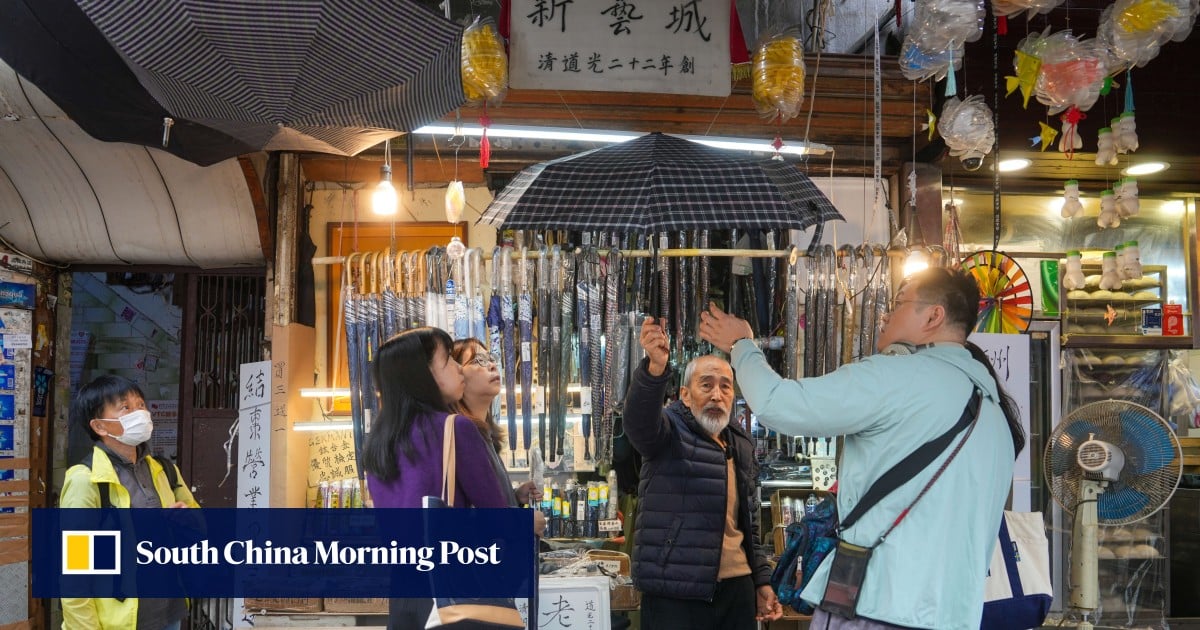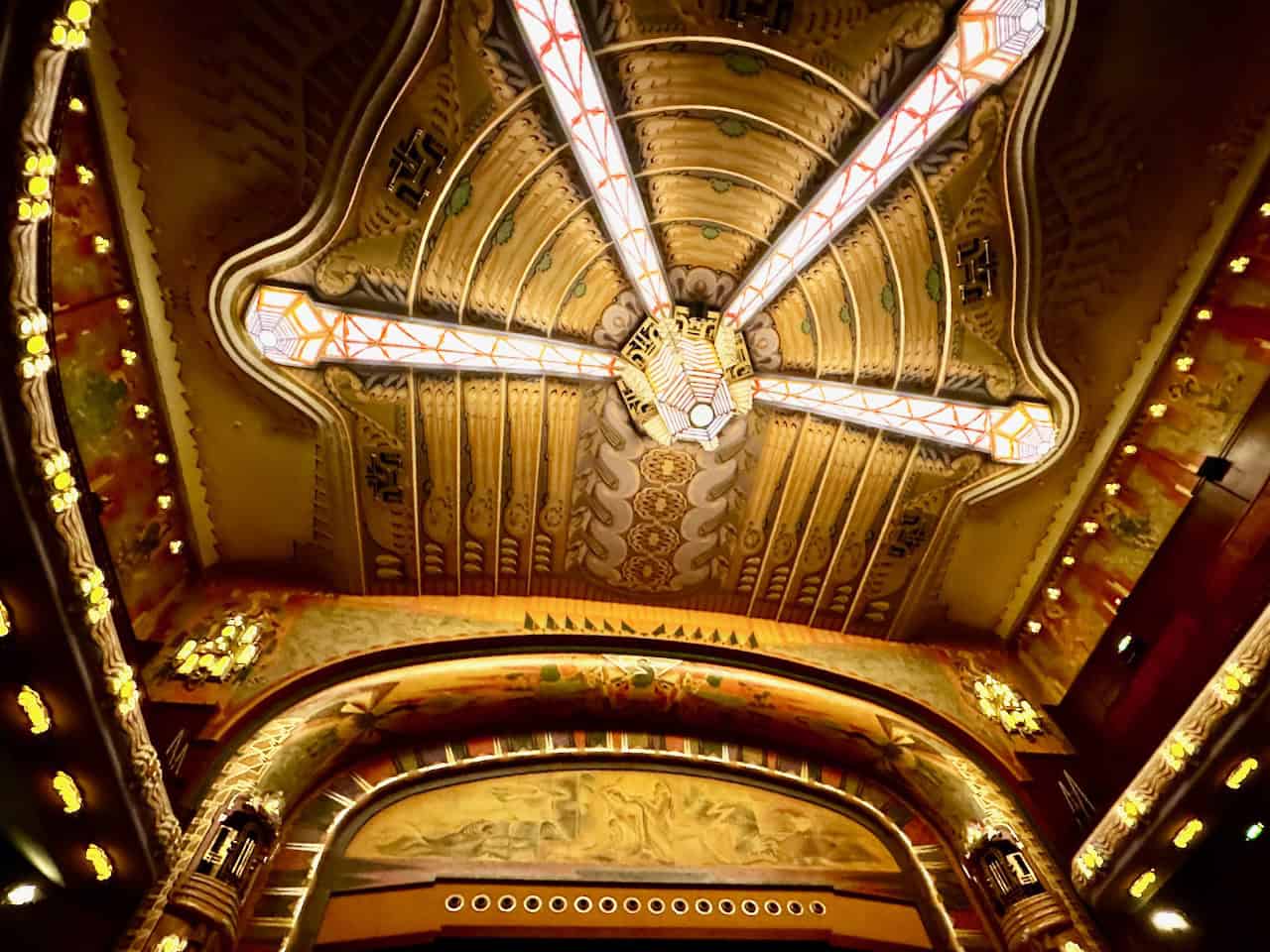
The Tuschinski Theater, Amsterdam’s most beautiful and historically significant cinema, is a masterpiece of architectural flair and cultural heritage. Located in the city centre, a stone’s throw from Rembrandtplein, this theater, opened in 1921, is a stunning blend of architectural styles from that period. It was the vision of Abraham Tuschinski, a Polish Jewish entrepreneur whose dream was to create the most luxurious movie theater in the world. He certainly achieved that! Carefully restored to its former grandeur, the Tuschinski Theater today remains a much-loved venue for film buffs and architectural enthusiasts alike. In 2021, Time Out named Tuschinski Theater as ‘The Most Beautiful Cinema in the World”, and I wholeheartedly agree (though, obviously, I’ve not been to all of them).
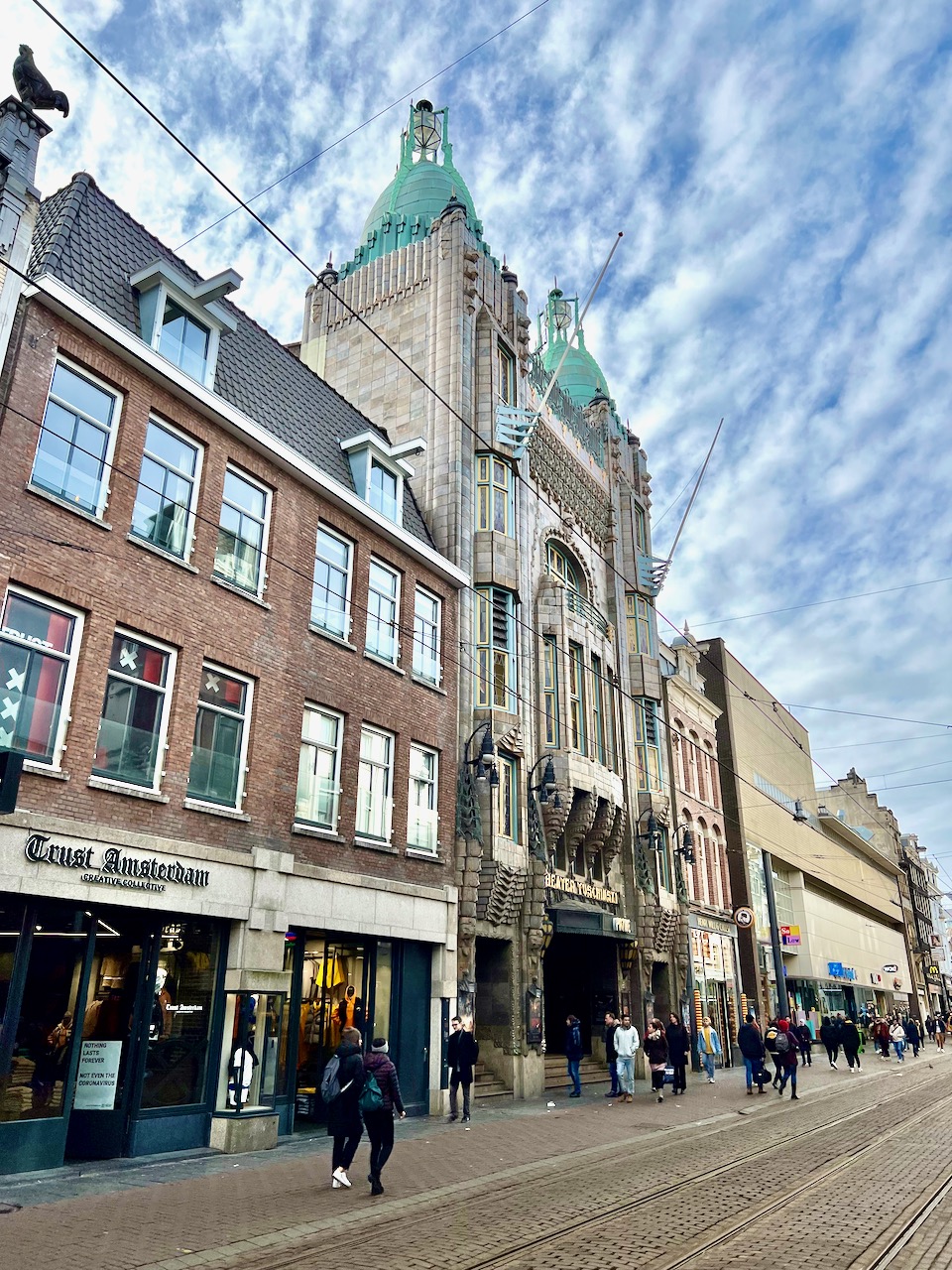 Tuschinksi Theater Amsterdam, with its two towers
Tuschinksi Theater Amsterdam, with its two towers
I’ll never forget my first visit in the early 90’s: I felt like I’d been transported back to the 1920’s as soon as I stepped through the front doors. The grand foyer, with its sweeping staircases, wood panels and richly decorated walls, is both opulent and colourful. In the main hall, I was met with wood-panelled VIP boxes, velvet seats and a warm, golden glow. As I walked further inside, I gasped in awe at the stunning murals and the magnificent Art Deco light fixtures. It was clear to me then that a visit to the Tuschinski Theatre is a lot more than just to watch a movie; it’s a magical journey to a lavish, bygone era.
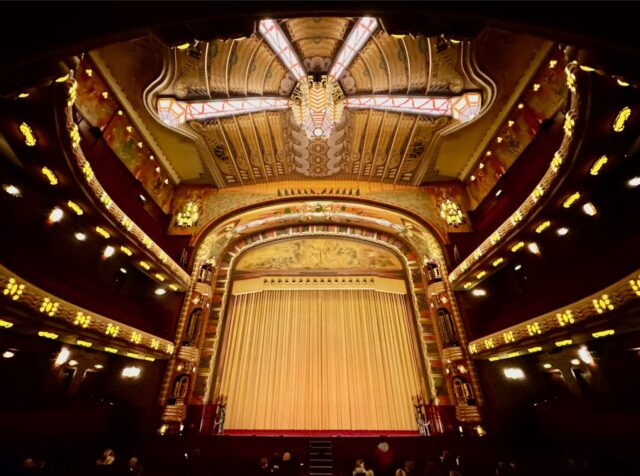 The main hall (Grote Zaal or Hall 1)
The main hall (Grote Zaal or Hall 1)
The vision of Abraham Tuschinski
The story of the Tuschinski Theater begins with its founder, Abraham Icek Tuschinski. Born in 1886 in Brzeziny, Poland (then part of the Russian Empire), Tuschinski initially trained as a tailor. However, his ambitions stretched far beyond his trade. In the early-20th century, he attempted to emigrate to America but decided to stay put in Rotterdam where he saw the growing popularity of cinema.
Tuschinski opened his first movie theater in Rotterdam in 1911, quickly expanding his business to include several cinemas. His dream was to create a grand movie palace that would transport audiences into a world of elegance and spectacle. In 1919, he chose Amsterdam for his ultimate project, commissioning architect Hijman Louis de Jong, and later Willem Kromhout, to bring his vision to life. The result was the Tuschinski Theater, which opened on October 28, 1921. In the following years, Tuschinski added more luxurious features and artistic elements to elevate the grandeur.
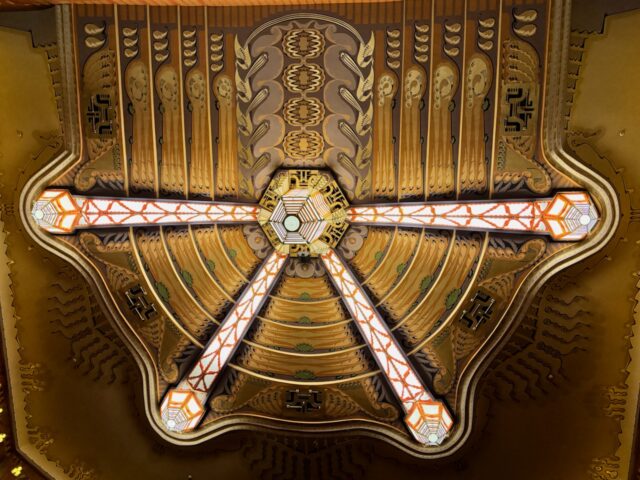 The amazing ceiling in the main hall
The amazing ceiling in the main hall
Booking.com
A unique fusion of architectural styles
The Tuschinski Theater is a magnificent example of eclectic early-20th century architecture, blending multiple styles into a harmonious whole. The exterior, with its two towers, is heavily influenced by the Amsterdam School, an early-20th century architectural movement known for its expressive forms and intricate brickwork. The building also incorporates elements of Art Nouveau, Jugenstil and Art Deco, creating an eye-catching and unique aesthetic.
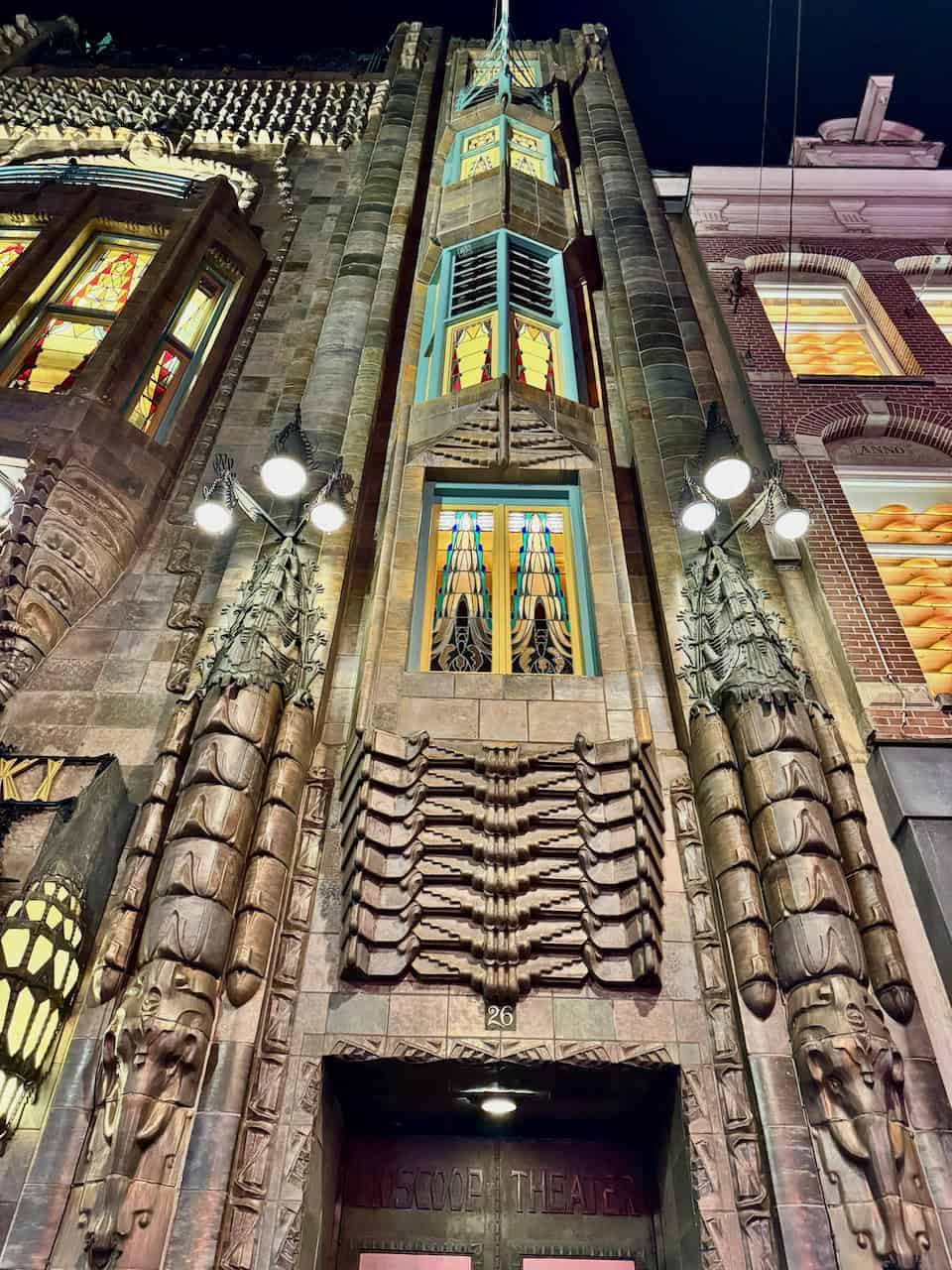 Detail of the exterior
Detail of the exterior
Tuschinski interior
Every detail of the Tuschinski Theater’s interior was designed to create an opulent and dreamlike atmosphere. Inside, the theater is a feast for the senses. The interior design, overseen by artists such as Pieter den Besten and Jaap Gidding, features rich ornamentation, stained-glass windows, elegant woodwork and elaborate murals.
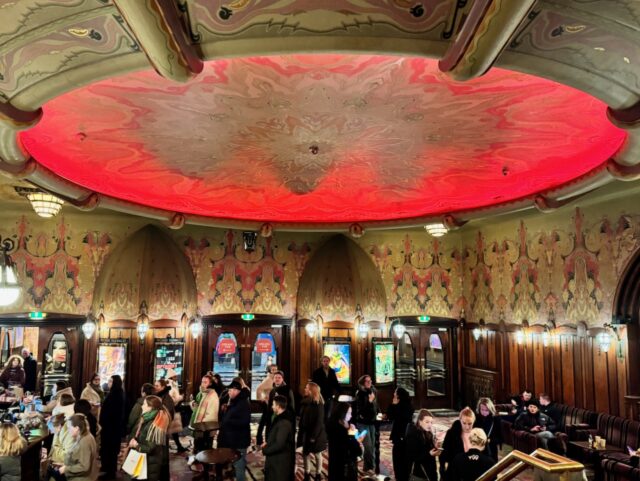 Foyer
Foyer 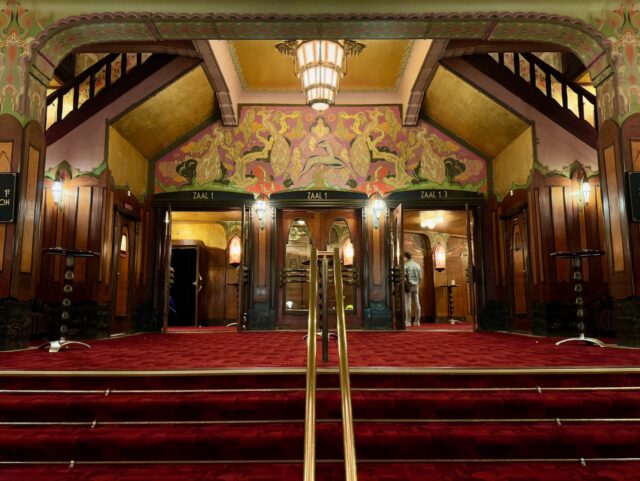 Stairs leading from the foyer to the main hall.
Stairs leading from the foyer to the main hall.
The main hall (‘Grote Zaal’), with its lavish carpeting, golden accents, murals and atmospheric lighting, evokes the grandeur of an old-world opera house.
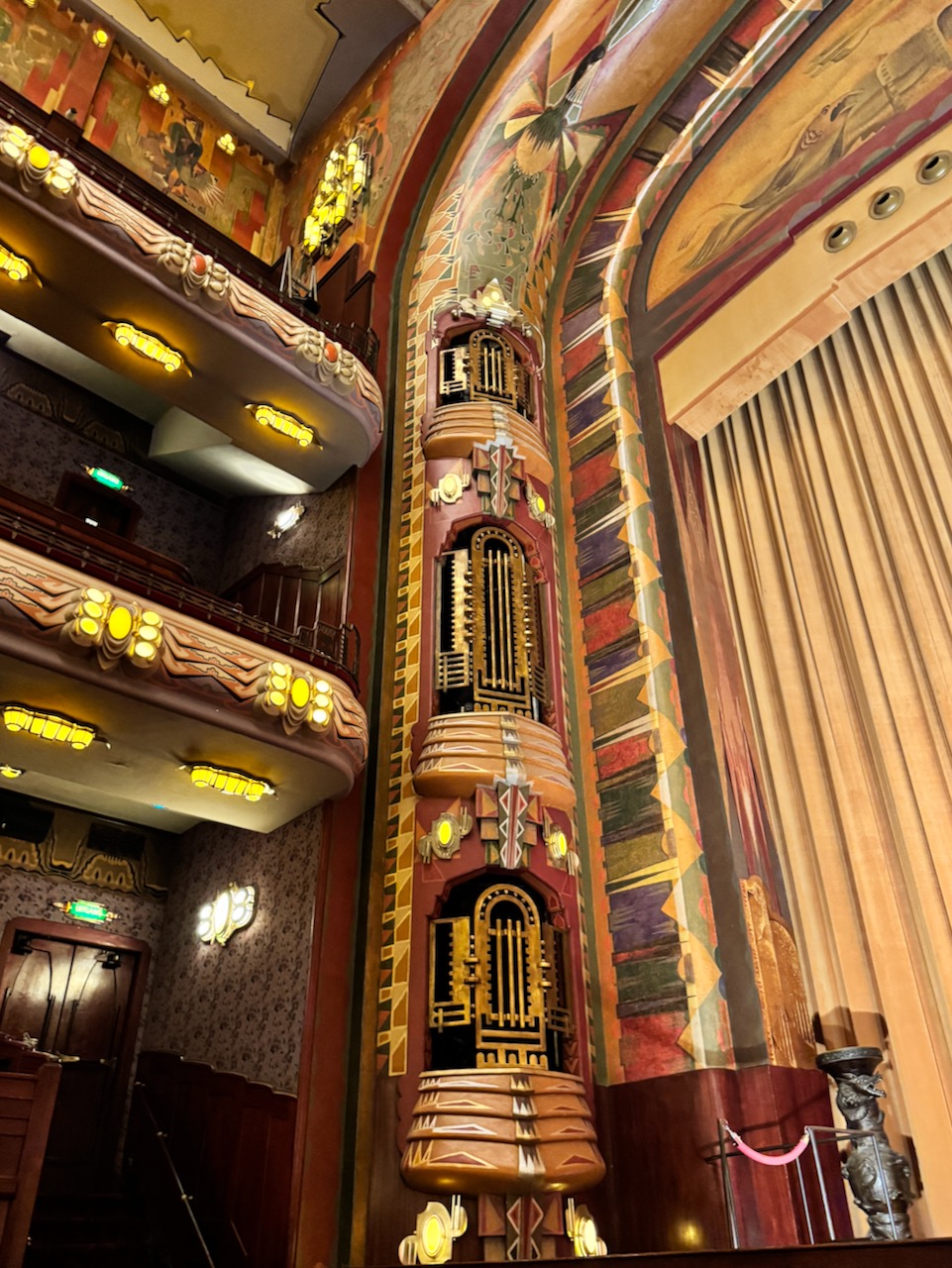 Main hall
Main hall
One of the most striking elements of the interior is the lighting design. The warm, glowing lamps and ceiling fixtures, inspired by the designs of Art Deco master Emile-Jacques Ruhlmann, bathe the space in a golden hue, making the entire theater feel intimate and magical.
 Gorgeous lamps
Gorgeous lamps 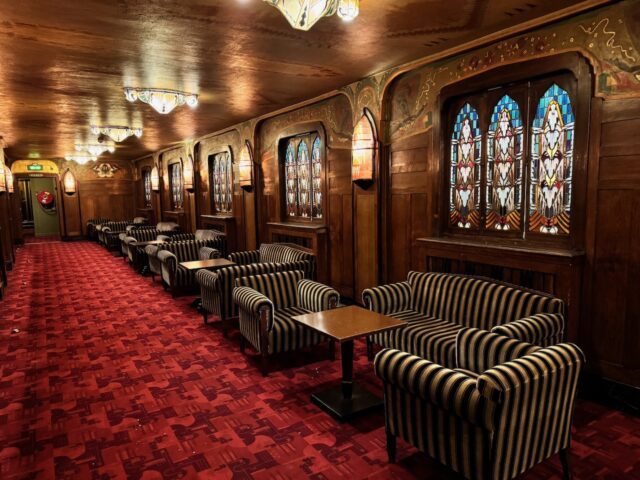 Plush seating and stained-glass windows
Plush seating and stained-glass windows 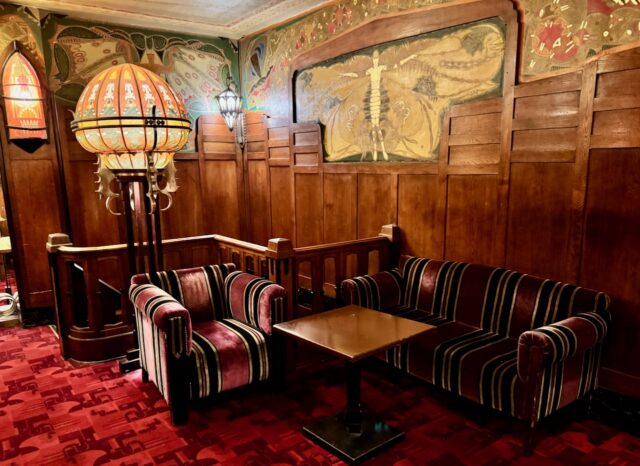 I love this little corner
I love this little corner 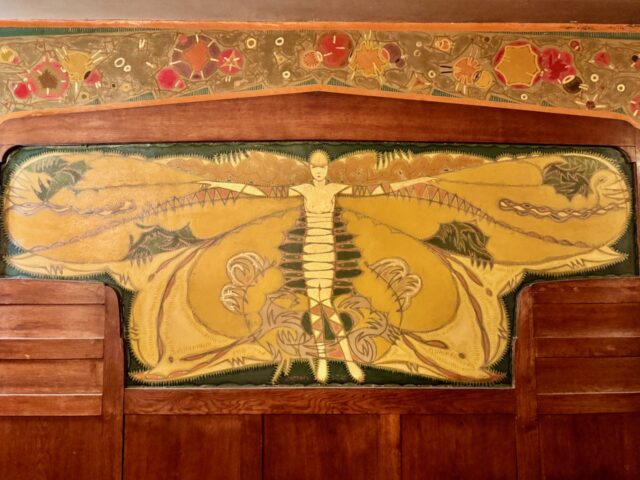 Close-up of a wall panel
Close-up of a wall panel
After the opening of the theater in 1921, various religious and political groups complained that the theater was too decadent. Numerous ornaments were removed or covered, and murals were painted over.
The fate of Abraham Tuschinski
Abraham Tuschinski’s story took a tragic turn during World War II. His cinemas in Rotterdam were destroyed as a result of the Nazi invasion in 1940. As a Jewish businessman, he became a target of the Nazi occupation. In 1942, he was arrested and deported to Auschwitz, where he perished. The Tuschinski Theater was taken over by the Nazis and renamed Tivoli during the occupation. After the war, the theater’s original name was restored, and it continued to serve as one of Amsterdam’s premier cinemas.
Royal Theater Tuschinski
In 2019, the owner, Pathé Nederland, executed a vigorous renovation in conjunction with the theater’s centenary in 2021. The theater was carefully restored to preserve its original splendour – ornaments and furnishings were recovered and murals were restored – while incorporating modern technology. On its 100th birthday, the theater received the honorary title of ‘Royal’ from the Dutch monarch.
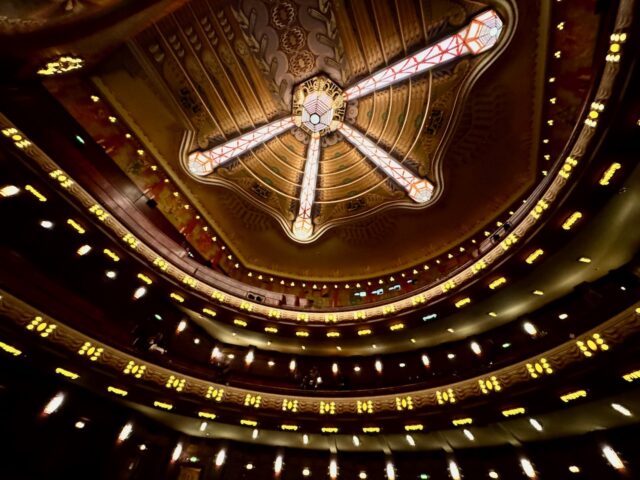 Main hall, from the front looking back
Main hall, from the front looking back
Today, its main hall retains its historic charm while featuring state-of-the-art projection and sound systems, allowing visitors to enjoy films in an atmosphere of old-world elegance. There are five other halls, with Halls 2 and 3 restored to their original state with resplendent murals by Pieter den Besten. The corridor that connects the Tuschinski Theater with the adjacent Arthouse is decorated with Asian-inspired artwork and motifs.
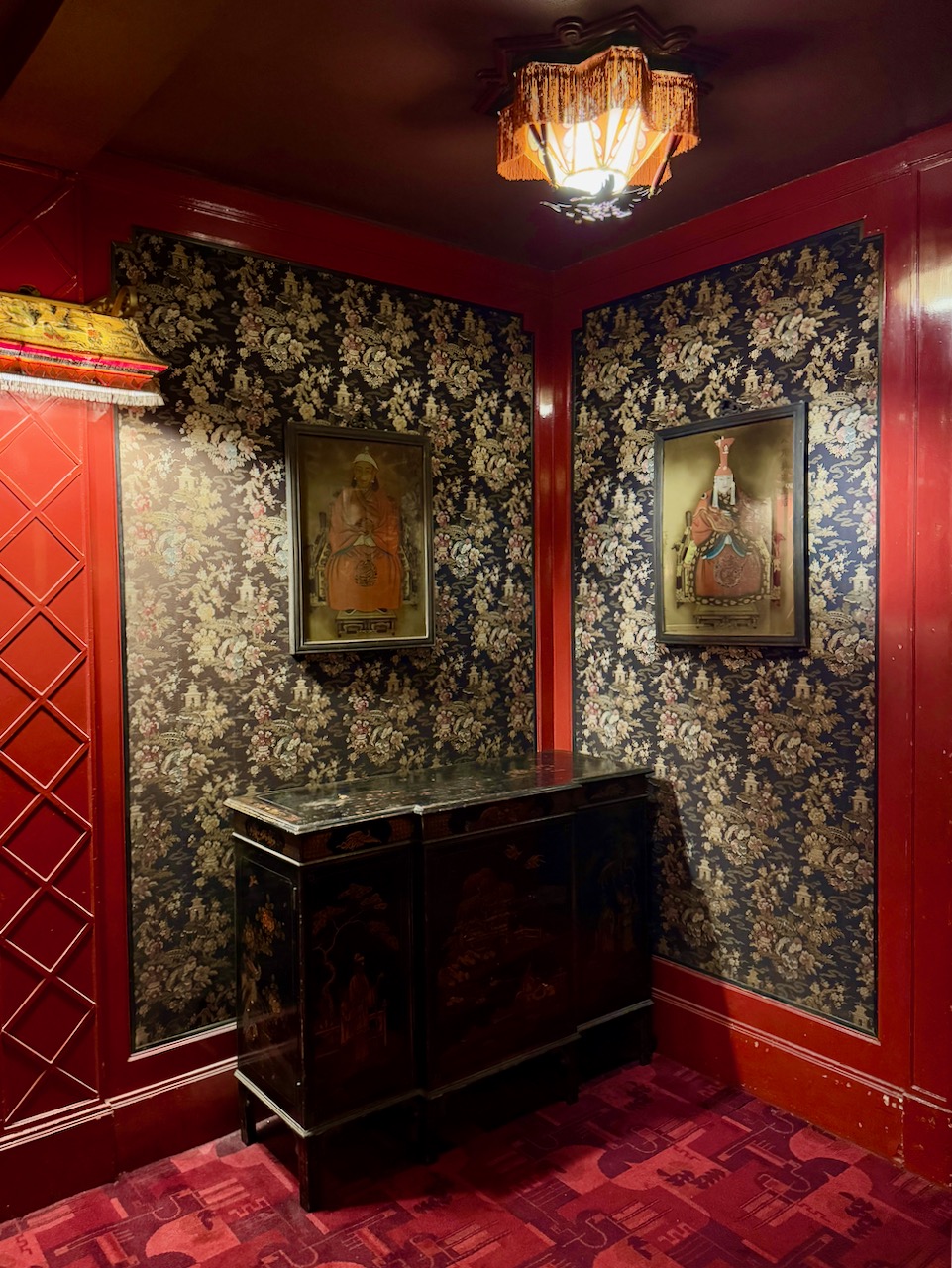 Asian-inspired motifs and furnishings
Asian-inspired motifs and furnishings
The best ways to experience the Tuschinski Theater
Visiting the Tuschinski Theater is, in my book, one of the top things to do in Amsterdam. There are several ways to experience this magnificent cinema:
- The best way to enjoy the theater is to watch a movie in its stunning main hall. Arrive 15-20 minutes earlier to enjoy and admire the gorgeous interior. Choose from a variety of seats, such as the luxury VIP boxes (‘Loges’), single seats in the hall or balcony or ‘Love Seats’ (spacious sofas for two persons).
- Opt for a luxurious VIP experience with reclining seats and private service, perfect for a special occasion.
- The theater offers 45-minute audio tours that showcase its rich history, architecture, and hidden details.
A lasting legacy
More than a century after its opening, the Tuschinski Theater remains one of the most beautiful cinemas in the world. Its combination of architectural beauty, rich history and cinematic tradition makes it a cultural treasure in Amsterdam. Whether you’re a film enthusiast, an architecture lover, or simply someone who appreciates timeless elegance, a visit to the Tuschinski Theater is an unforgettable experience.
Read more about Amsterdam on Velvet Escape
Източник за тази статия
Наши спонсори са:
Български трактори на добри цени при изключително качество






